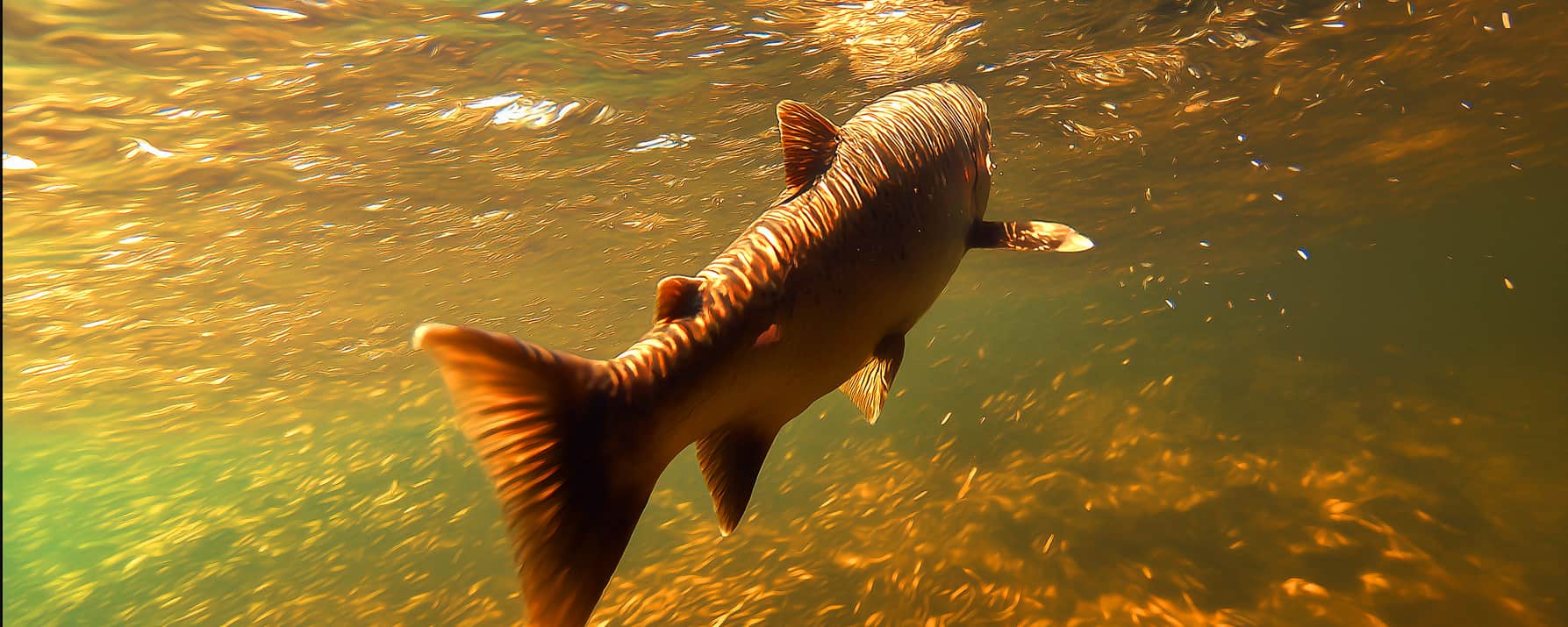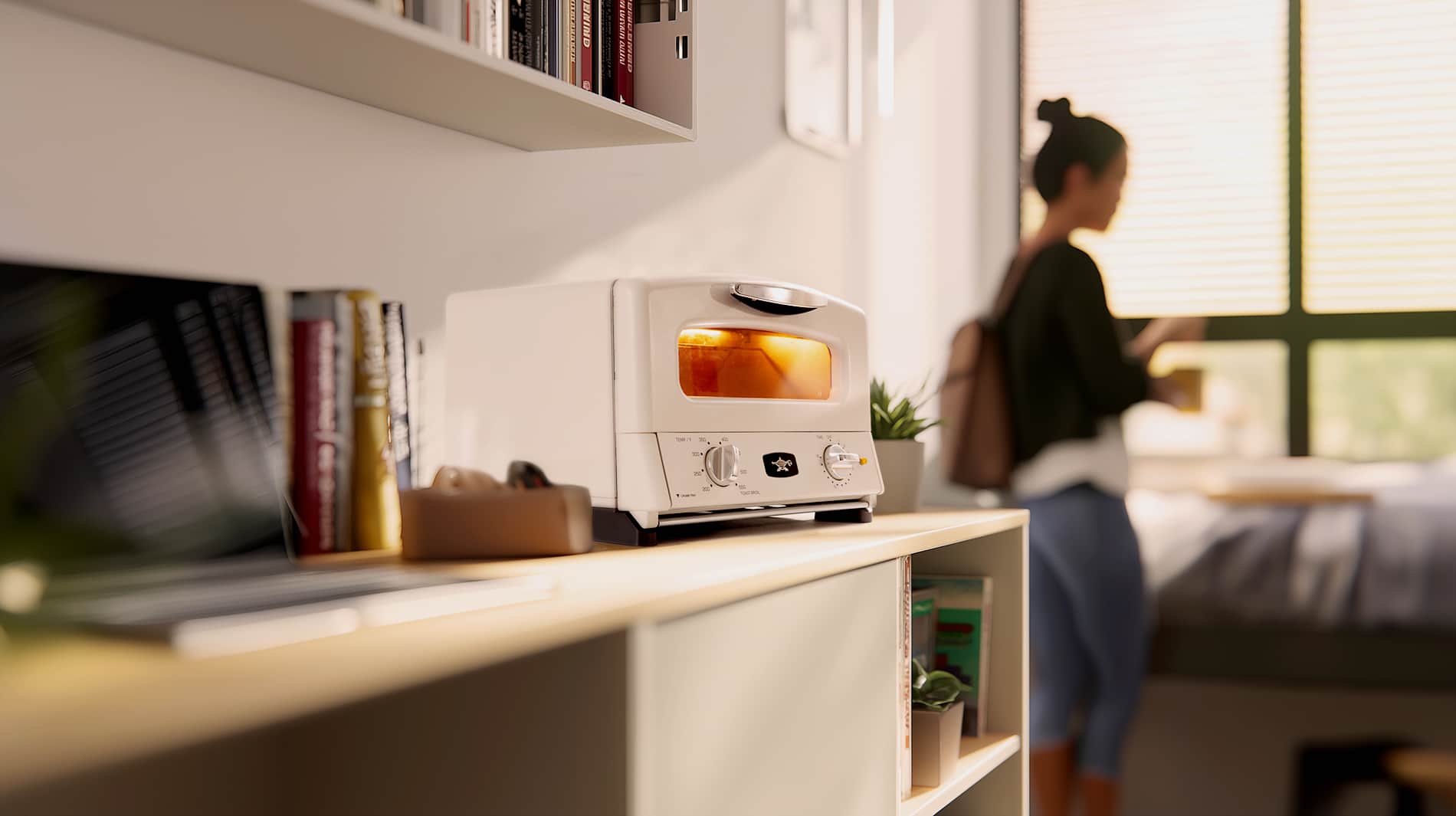There's something about a baked salmon fillet that makes dinner feel elevated. It's rich yet clean, buttery, and packed with protein. And unlike many "fancy" proteins, salmon is wonderfully forgiving when you know how to work with it.
But the real modern-day magic? Choosing the right appliance to cook it.
In an age where countertop cooking gadgets have taken over kitchens, we're long past the days of relying only on the stovetop. Now, you've got options: toaster oven, air fryer, sous vide, and grill—and each one changes how your salmon looks, tastes, and cooks. Whether you're chasing crispy skin, tender flakes, or smoky char lines, this guide will help you master them all.
Table of Contents
📚 Table of Contents
Choosing Salmon
Wild Salmon or Farmed Salmon
Wild salmon is leaner and firmer, with a bold fish flavor and a rich nutrient profile. On the other hand, farmed salmon is milder, buttery, and more readily available in both fresh and frozen forms. Both can be delicious when prepared correctly.
Fresh versus Frozen
Fresh salmon should look vibrant and moist. If it smells overly fishy, pass on it. Frozen salmon? No shame in that game. Flash-frozen fillets can be just as good; simply thaw them overnight in the fridge or use the cold-water method if you're in a hurry.
Best Types by Cooking Method
Sockeye — Best for Grilling
Bold flavor, deep red flesh, and lean texture. Best grilled or broiled for a bold taste and firm meat that holds up to direct heat.
Coho (Silver salmon) — Poaching, Steaming
Milder than Sockeye but still flavorful, Coho offers a clean, slightly sweet taste with a balanced fat content. It's an excellent middle-ground option—great for gentle cooking methods like poaching, steaming, or low-temp oven roasting.
King (Chinook) — Roasting, Broiling
The richest and fattiest of the wild salmons, King has a luxurious, buttery texture and mellow flavor. Its high oil content makes it ideal for broiling, roasting, or slow cooking without drying out.
Atlantic (Farmed) — Baking, Air Frying
Almost all Atlantic salmon on the market are farm-raised. It's softer, lighter in flavor, and very forgiving. Ideal for quick weeknight meals, it performs well in air fryers or toaster ovens where consistency matters more than char.
Steelhead (Rainbow trout subspecies) — Pan-Searing, Oven Roasting
Often sold alongside salmon, steelhead trout has a similar look and flavor but is technically a sea-run trout. It's tender, delicate, and cooks quickly. Great for recipes that require a slightly thinner fillet and gentle handling.
Essential Prep & Cooking Techniques
- Deboning: Use tweezers to remove small bones.
- Skin Removal: Use a fish fillet knife to slide just beneath the fat layer.
- Dry Brine: Salt your fillet and refrigerate uncovered for 8–24 hours to enhance texture.
- Crispy Skin: Pat the skin dry, lay it skin-side down, and avoid moving it during searing or roasting.
Dry Brining Process Details
If you've ever had salmon that tasted better in a restaurant than at home, dry brining might be the missing link.
Dry brining involves lightly salting your salmon ahead and allowing it to rest in the refrigerator. This step seasons the fish deeply, helps it retain moisture, and creates firmer flesh that holds up better during cooking, especially under high heat, like in a toaster oven or on the grill.

Why it works:
The salt initially draws out surface moisture, which then reabsorbs back into the fillet along with the salt, creating a more flavorful and juicy bite.
How to do it:
- Pat the salmon dry.
- Sprinkle 1 to 2 tsp of kosher salt per pound of fish (you can also add a touch of sugar, pepper, or lemon zest).
- Place the salmon on a wire rack over a tray, skin side down.
- Refrigerate uncovered for:
- 30–60 minutes for light seasoning
- 4–12 hours for deeper flavor and firmer texture
- Up to 24 hours for cured-style firmness (great for pan-searing)
- Don't rinse—just cook as usual. Brush off any visible excess salt if needed.
Best uses:
Dry brining shines in high-heat cooking (like roasting or air frying) and is particularly helpful with farmed salmon, which tends to be softer and milder in flavor.
Mastering Doneness: Temp, Sight & Touch
Internal Temperature Guide
Salmon Doneness Temperature Guide
| Doneness | Internal Temp (°F) | Texture & Look |
|---|---|---|
| Rare | 110–115 | Deep red, soft |
| Medium-Rare | 115–120 | Slightly opaque, moist |
| Medium | 120–125 | Opaque, pink center, flaky |
| Medium-Well | 125–140 | Fully opaque, slightly firm |
| Well Done | 140–150 | Dry, firm, pale color |
Visual and Touch Cues
- Color Shift: From bright pink to creamy white
- Flake Test: Press lightly with a fork—the fillet should flake naturally when done

Appliance Showdown: Salmon Cooking Tools
Below, you can find a breakdown of the most popular cooking appliances and their respective strengths.
Toaster Oven (Our HeatMate Pick)
For those who prefer control over presets, toaster ovens continue to earn their keep, especially when cooking something like salmon, where texture and timing matter more than automation. HeatMate's graphite-powered heating makes it even better: it provides instant high heat of up to 550°F, with no preheat time, and offers versatility with multiple trays (including a flat pan, griddle pan, grill rack, and toaster net) included.
- How to do it: Roast skin-side down at 400–425°F for 8–12 minutes. No preheat needed.
- Results: Even browning, crispy skin, and a moist center—even from frozen—with just 2–3 extra minutes applied.
💡 Pro Tip: Alternate HeatMate trays to change textures—use the grill rack for airflow or the flat pan for moist results.
Air Fryer
It's fast. It's efficient. And it delivers that coveted crispy skin.
- How to do it: Oil the basket and fillet. Cook at 375–400°F for 7–10 minutes.
- Results: Golden, crunchy edges and quick cook times. Just watch for over-drying.
Sous Vide
Slow and precise, sous vide delivers perfect edge-to-edge doneness.
- How to do it: Seal the fillets and cook at 120°F for 40–60 minutes. Sear to finish.
- Results: Incredibly tender, buttery, and consistently cooked. Ideal for serving chilled or as a base for sauces.
Grill
Salmon + fire = smoky, dramatic flair. Great for summer dinners or char lovers.
- How to do it: Place the skin-side down over high heat for 6–8 minutes, then flip to a cooler side for 2–4 minutes.
- Results: Char lines, bold flavor, crispy edges. Less forgiving, so timing matters.
Quick Comparison
⚙️ Appliance Comparison at a Glance
| Appliance | Best For | Cook Time | Texture | Skill Level |
|---|---|---|---|---|
| HeatMate Toaster Oven | Fast dinners, crispy skin | 8–12 min | Juicy, browned | ⭐⭐⭐⭐ |
| Air Fryer | Crisp skin, speed | 7–10 min | Crunchy, light | ⭐⭐⭐⭐ |
| Sous Vide | Tender precision | 40–60 min | Silky, even | ⭐⭐ |
| Grill | Outdoor flavor, char lines | 10–12 min | Charred, smoky | ⭐⭐⭐ |
Other Cooking Methods
- Stovetop: Great for pan-searing with crispy skin.
- Broiler: Quick caramelization and surface browning.
- Slow Roasting: Cook at 275°F for an ultra-tender texture.
- Poaching: Moist and gentle, best with aromatics.
- Smoking: Adds rich flavor—use cedar planks or a stovetop smoker.

Want to go deeper?
Poaching and smoking at home (yes—even without a grill) are easier than you think and bring out a whole new side of salmon.
Scroll down to the end of the article to the "Explore More" section for trusted, step-by-step tutorials.
Flavor Profiles: Seasonings & Marinades
Flavor Profiles & Seasoning Ideas
| Flavor Style | Key Ingredients |
|---|---|
| 🌿 Bright & Fresh | Lemon, dill, olive oil |
| 🍜 Umami & Savory | Soy sauce, sesame oil, garlic, ginger |
| 🔥 Sweet & Spicy | Miso paste, honey, chili flakes |
| 🌱 Herby Classic | Dijon mustard, parsley, thyme, garlic |
| 🌶️ Bold Cajun | Paprika, cayenne, oregano, black pepper |

Marinate for 30 minutes max—salmon doesn't need much time to absorb flavor.
Pairing Ideas: Sides That Shine
- Roasted potatoes or carrots
- Wild rice pilaf with herbs
- Grilled asparagus or broccolini
- Orzo tossed with lemon zest and parsley
- Chilled cucumber-yogurt salad
Keep it simple and let the salmon take center stage.

Troubleshooting & Leftover Ideas
Dry Salmon?
Lower the temperature next time. Or flake into pasta with cream sauce, or top a salad.
Sticking Issues?
Oil the pan and the fillet, or use parchment or a grill rack.
Any Leftovers?
Try recipes for salmon tacos, croquettes, rice bowls, or salmon salads.

Sustainable & Ethical Salmon Choices
Look for eco-certifications:
- MSC (Marine Stewardship Council) for wild salmon
- ASC (Aquaculture Stewardship Council) for responsibly farmed salmon

Wild salmon is seasonal and sustainable in moderation. Farmed salmon keeps supply steady year-round.
From Technique to Your Result
No, there's no single "best way" to cook salmon—only the one that brings out the flavor and texture you love.
The snap of crispy skin from a high-heat toaster oven, the buttery tenderness of sous vide, or the quiet satisfaction of poaching a fillet in herbed broth, each method delivers something different.
So choose your fillet, trust your tools, and cook it the way you want it.
Explore More:
Poaching Salmon (Stovetop & Gentle Methods)
-
Simply Recipes – "How to Poach Salmon": A step-by-step guide using aromatics like white wine, dill, parsley, and shallots in a gentle simmer. Cooking time averages 5–10 minutes, with an internal temperature of approximately 125°F, resulting in a moist and tender texture.
- Inspired Taste – "Perfect Poached Salmon Recipe": Adds visual cues—salmon nestled on herbs & lemon slices in poaching liquid. Covers timing, seasoning, and serving tips.
Smoking Salmon Indoors (Hot-Smoking or Stovetop Methods)
-
Serious Eats – "How to Make Smoked Salmon That's Way Better Than Store‑Bought": Comprehensive and flavor-forward. Guides you through dry brining, forming the pellicle, choosing apple or cherry wood, and hot smoking at ~225°F. Internal temp target: 130–140°F. °F.
- The Spruce Eats – "How to Smoke Salmon": A reliable walkthrough, including curing the fish, air drying for pellicle formation, and smoking times (~1–4 hrs at ~140°F). Perfect for replicating without outdoor grills.
Looking for more ways to use your toaster oven? Head to our Toaster Oven Recipes section and explore the full collection.



Share:
Why Frozen French Fries Bake Up Crispier Than Fresh-Cut Fries
The Smarter Dorm Kitchen: Why Every Student Should Consider a Toaster or Toaster Oven